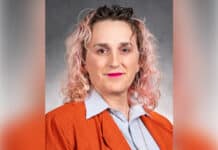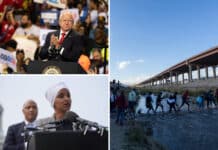A pair of Republican Minnesota Legislators seem worried that the state has abandoned its initial objectives in the fight against COVID-19.
Governor Tim Walz announced his decision to close all Minnesota public schools for the remainder of the academic year, Thursday, according to KTTC. As it became clear that the governor would issue this order, Republican Minnesota State Representative Pat Garofalo aired his concerns that the intentions behind state’s COVID-19 response may have changed.
“There has been a concerning pivot in state policy,” he said via Twitter, Thursday. “Originally a temporary emergency was needed [to] build ICU capacity [and] ‘bend the curve,'” he noted, “but now we are being told we need to stay in an Emergency State so nobody gets infected.”
This is a “huge difference,” Garofalo concludes.
“Schools are now shut down through the first week of June. This is no longer about stopping a surge. It has become about stopping all infections. Totally different policy goals,” he added in a seperate post.
“Keeping schools closed until there is a vaccine is a policy without public health nor economic justification,” he said via a third tweet.
He also reminded his followers what the original goals of Walz’s coronavirus response plan were, contrasting them to the much loftier objective of preventing any new cases of the virus.
The goals were:
✅ Prevent a collapse of our health care system
✅ Isolate/protect vulnerable populations
✅ “Bend the curve” on new infectionsIt was never to stop everyone from getting infected until a vaccine came out. Now, some policies are staying in place to do that. Why?
— Representative Pat Garofalo (@PatGarofalo) April 24, 2020
State Senator and medical doctor Scott Jensen echoed Garofalo’s worries on his own Twitter page.
Are the goalposts being moved? https://t.co/dQvNZxFax3
— Scott Jensen (@drscottjensen) April 24, 2020
Jensen has been an outspoken critic of Minnesota’s COVID-19 response for several weeks. Earlier this month he drew nationwide attention to his state’s potentially corruptible practices for reporting virus related deaths.
Previous Extensions and Policy Shifts
Garofalo and Jensen’s concern appears to have been peaked by Walz’s most recent extension of school closures, however this is not the first time the governor has changed or extended one of his emergency policies.
When Walz originally ordered business to close their doors early last month, this order was supposed to last for 10 days. Now, closures are set to stay in place until at least May 4. This means that owners of so called non essential business will be without income for at least 7 weeks.
The governor made a similar maneuver with his stay at home order which was originally supposed to last 10 days but will now last almost two months.
Meanwhile, Mayo Clinic has met the benchmark Walz said healthcare providers need to clear in order for the economy to reopen. Despite this, the economy remains largely closed and the Clinic has been forced to cut $1,400,000,000 in wages after a separate executive order that cost the hospital the majority of its business.
Rising National Concern:
Pundits at the national level have also raised concerns related to those of the Minnesota Republicans that the standards which need to be met before the economy reopens may be changed as the severity of the coronavirus pandemic decreases.
RELATED: Mayo Clinic Says It Met Walz’s Requirement To Reopen The Economy
“The Trump administration might have thought the hard call was shutting down the U.S. economy,” writes the Wall Street Journal’s Kimberley Strassel. However she’s worried that “the left intends to make reopening it far harder, lacing it with political risk by raising the bar for ‘success’ to fantasy heights.”
Others characterize the entire discussion around when the economy should reopen as a “false debate,” arguing that the large negative impacts of continued closures far outweigh the relatively smaller benefits.


















